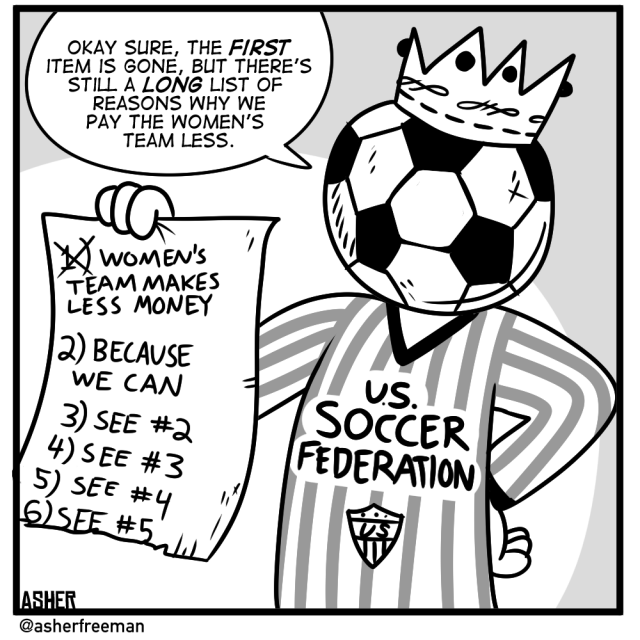The gender pay gap: a phenomenon some say doesn’t exist. However, the recent lawsuit filed by the US women’s national soccer team is shedding new light on an old controversy.
On March 29, five women from the national team– Carli Lloyd, Alex Morgan, Megan Rapinoe, Becky Sauerbrunn and Hope Solo – filed a wage-discrimination action against the U.S. Soccer Federation for being paid substantially less than the comparable U.S. men’s national soccer team.
Members of the women’s team earned about one-fourth of what male soccer players earned in 2015, despite winning their World Cup and bringing in $20 million more in revenue than the men’s team did. The women who filed this lawsuit are seeking equality and to make progress toward closing the pay gap.
Even though the U.S. Soccer Federation only pays men if they are called to the national team while women are salaried employees, the discrepancies in bonuses received by the two teams should not differ to the degree they do.
Based on data in the lawsuit, the players on the men’s team receive a minimum of $5,000 to play in each game regardless of the outcome, in addition to receiving anywhere from $6,250 to $17,625 per game based on the ranking of their opponent and whether they win or tie the game.
The women, on the other hand, are paid $72,000 a year to play a minimum of 20 games, and can receive a bonus of only $1,350 for each one they win. Unlike the men, they only receive the bonus if they win the game and they get nothing if they tie.
If the women happen to win all their games, the most a player would make from the federation would be $99,000 for that year, while the men’s team can lose all their games for that season and players would still earn $100,000. Men who win all their games can earn as much as $260,000 in a season.
Furthermore, after playing 20 games, a female player will not earn any additional compensation while a man could earn bonuses anywhere from $5,000 to $17,625 for additional games played.
And these numbers represent just discrepancies in the earnings from the U.S. Soccer Federation and doesn’t include bonuses from the World Cups.
The only time the men and women are paid the same is when they qualify for the Olympic roster. The Federation then pays each of those players $15,000 for making the team, showing that the idea of equal pay between the teams isn’t such a taboo idea.
Some will argue that men’s soccer has been around longer, has a larger fan base and they plays harder teams. While there are some differences between the two teams, there is no reason for a pay gap this large. This pay gap cannot even be justified from a business standpoint since the women’s team brought in more revenue than the men’s team.
Gender inequalities are still prevalent in society, and this issue highlights the pay inequalities that still exist. Men and women should, at the very least, be paid a comparable amount and receive comparable bonuses.
Kelley O’Hara, one of the players on the women’s soccer team once said, “No excuses. Play like a champion.” While winning the World Cup last year, the women did just that. Now it is time for the U.S. Soccer Federation to step up and pay them like the champions they are.



